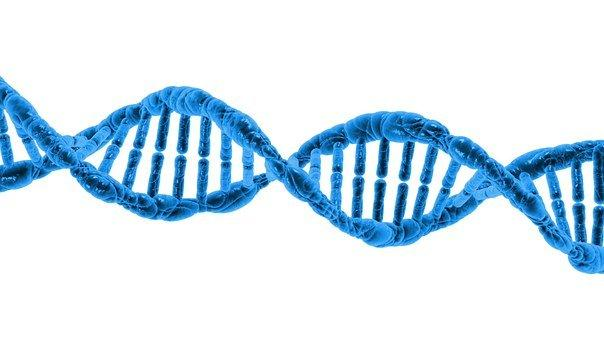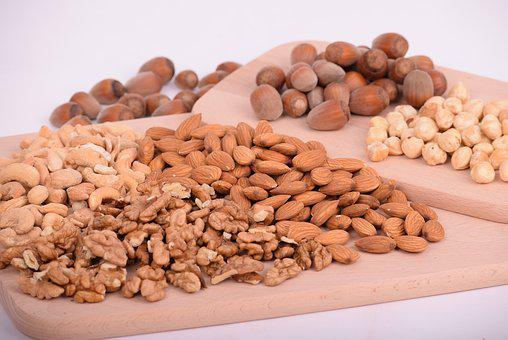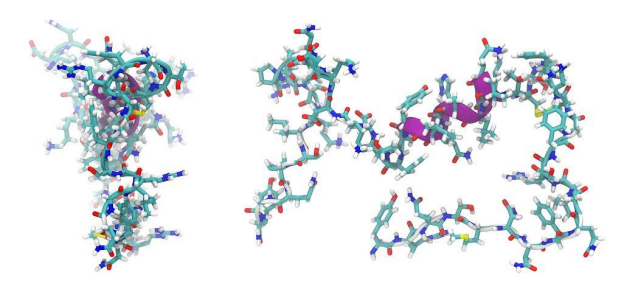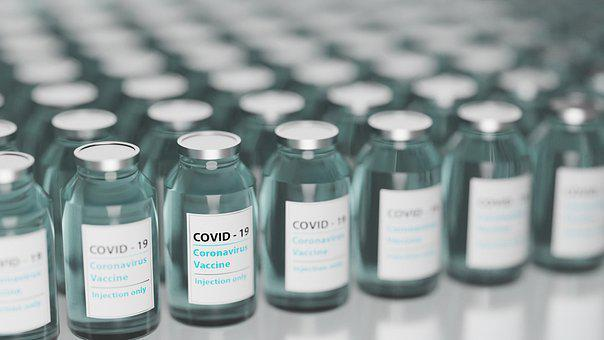Recombinant Protein Production: Challenges and Opportunities
Jun 3rd 2022
Therapeutic recombinant proteins serve as a powerful tool to combat most diseases that have previously been hard to treat. The Chinese Hamster Ovary cells and Escherichia coli include the most utilized expression systems. However, all the other expression systems have weaknesses and strengths concerning the development cost, time, protein size, yield, growth conditions, regulatory approval, and post-translational modifications.
The efficient strategies for recombinant protein production services are gaining increasing importance even as more applications that need many proteins hit the market. The high production efficiencies and the lower cost of the final product are required to obtain a commercially viable process. This article examines the challenges and opportunities in recombinant protein expression.
Challenges

Environmental Contamination
One of the biggest challenges affecting plant protein expression systems and solid phase peptide synthesis includes concerns surrounding genetically modified crops. There is a massive concern about recombinant genes spreading through pollen dispersal, seed dispersal, and horizontal or viral transfer. There is a danger of therapeutic proteins finding their way into the food supply of humans or animals. That will bear an adverse effect on the environment’s organisms. Not so long ago, the USDA legislation reacted to the incidences of transgenic plants spotted in food crops. The use of ELISA kits to test for exposure to viruses and other pathogens has shown a lot of environmental contamination. How does Elisa work?
Elisa tests utilize the specialized enzymes attached to antibodies in a person’s blood. Several strategies could ease such concerns, including geographic containment and the utilization of different seasons for planting than the ones for local food crops. Other essential strategies include;
- The utilization of male sterility in strains of GM plants through the use of chloroplast systems of expression
- Using inducible promoters
- The production of easily identified varieties of plants like white tomatoes
- The use of self-pollinating species
- The production of nongerminating seeds
- The production of inactive fusion proteins is activated by post-purification processing.
- Growth of crops inside greenhouses that are managed appropriately.
- Use of hydroponic growing rooms or cell suspension cultures to provide an economical and effective means for the containment of GM plant materials.
Loss of Expression

The efficient expression of the gene of interest is necessary for the adequate production of recombinant proteins in custom gene synthesis. The challenge is that expression can be lost because of structural changes in recombinant genes or genes from host cells disappearing. Let us look at the loss of expression on the three alternatives of; plasmids, delivery through a virus, or the host’s chromosomes.
In Plasmid-based Systems
What are plasmids? They are DNA elements that are extrachromosomal and self-replicating cytoplasmic found in eukaryotes and prokaryotes. Plasmids have been majorly used as molecular vehicles for recombinant genes in antibody sequencing services. It is easy to manipulate plasmids, thus making plasmid expressions popular genetically. The gene dose depends on plasmid copy number and is higher than when integrating recombinant genes into the host’s chromosome. The plasmid copy number is highly dependent on the host, plasmid, and the culture conditions.
Notably, the copy-number genes regulate the plasmid-copy number. The number of plasmid numbers ranges from a few of them to 200. Plasmids usually bear a metabolic load on the host because cellular resources need to be utilized to replicate and express plasmid-encoded genes and antibody production. The increase of metabolic load is directly proportional to the rise in the temperature, size of the insert, level of expression, recombinant protein yield, and the level of toxicity of the expressed protein towards the host.
Such metabolic loads commonly lead to a decrease in the growth rate of plasmid-bearing cells. Metabolic load increases as copy number increases. Consequently, the growth rate decreases, leading to the faster-growing plasmid-free cells overtaking the culture.
The leading cause of the reduced productivity of recombinant proteins is plasmid loss. The plasmid distribution upon the cell division that is not equal eventually leads to plasmid-free cells. It is known as plasmid segregation instability.
Chromosomal integration

In gene synthesis, the chromosomal integration of the gene of interest serves as a powerful alternative to overcome the problems of plasmid-based systems’ expression instability. The host does not bear the plasmid replication and maintenance burden. Chromosome integration is mainly suitable for the host’s metabolic engineering. The foreign gene’s adequate integration in the chromosome is both time-intensive and labor-intensive. Additionally, the integration of chromosomes leads to lower production rates than the plasmid-based systems because of a low recombinant gene’s copy number.
Chromosome integration has been the best strategy of choice for custom protein synthesis in the commercial expression of recombinant proteins by animal cells. In that case, the investment of the long and intricate procedure in developing the host is compensated easily with a stable host. The major problem with chromosomal integration is the possibility of integrating the gene of interest into chromatin’s inactive region. The use of locus control regions is one of the main strategies to overcome the problem.
Viral vectors
One of the most effective and the simplest ways to deliver the peptide synthesis’ gene of interest is viral vectors. In an efficient and non-destructive manner, viruses have evolved to provide their genetic material to a host. Retroviruses are among the viral vectors and promote the integration of the viral genome into the cell’s chromosomes. Others are primarily used for transient expressions. In these cases, the antibody production steps in the production of recombinant proteins only take place during some stages of the virus’ life cycle.
The simplicity of virus-driven expressions makes it essential for production in higher eukaryotes since getting stable recombinant animal cells is a long and tedious procedure. More often than not, expression is utilized to generate sufficient proteins for polyclonal immune response, preliminary drug candidate testing, or laboratory scale applications.
Post Translational Processing
Aggregation, Folding, and Solubility
What is protein folding in gene synthesis services? Protein folding is a complex process involving two kinds of molecules playing an important role: chaperones for preventing the formation of the non-native insoluble folding intermediates and foldases, accelerating protein folding. Folding does not usually proceed adequately on occasion. That results in misfolded proteins accumulating in intracellular aggregates called inclusion bodies. Cell stress is one of the major causes of incorrect protein folding caused by nutrient depletion, heat shock, and other stimuli. As a response to stress, cells increase the expression of various chaperones, with some from the families of hsp70 and hsp100. When inactive proteins are produced, it represents a metabolic load and energetic drain.
On the other hand, the accumulation of inclusion bodies leads to structural strains in cells. Incorrect folding often leads to adverse consequences. Such consequences could include several human pathologies like Parkinson’s disease, Alzheimer’s disease, and Huntington’s disease. They are characterized by intracellular protein accumulation and aggregation. E. Coli protein aggression has often been observed in yeast, bacteria, insects, and mammalian cells.
Proteolytic Processing
In solid phase peptide synthesis, signal peptides required to direct proteins to various compartments of cells must be cleaved for a functional protein. The signal peptide is ejected by a membrane-bound signal peptidase complex upon the translocation of the membrane to the cellular membrane in prokaryotes or the endoplasmic reticulum in eukaryotes. The inefficient signal peptide removal results in protein retention and aggregation within the incorrect compartments like the endoplasmic reticulum. The yields of proteins secreted can also be reduced drastically.
Transport and Localization
As pointed out above, recombinant proteins could be directed to the different cellular compartments through fusion proteins or signal peptides. The other protein localization sites bear distinct advantages and disadvantages. Intracellular accumulation typically leads to high amounts of protein while allowing easy recovery of concentrated proteins with cells. The protein purification technique from the extracts of protein-rich cells is often quite tricky.
Opportunities

Image Source:
https://cdn.pixabay.com/photo/2021/01/06/19/45/vaccine-5895477__340.jpg
The therapeutic protein’s potential market is enormous, with products that range from enzymes to vaccines and from antibodies to hormones. Peptide synthesis companies must overcome hurdles to ensure antibody specificity since every type of recombinant protein contains challenges in production. That inevitably matches up with the strengths of the different available expression systems.
It takes a relatively shorter time to go from sequence to the production of grams of protein through high yield transient expression systems like Magnification. It is the main advantage that plants have over other systems of expression. This strength lends itself to producing the vaccines to treat emerging or rapidly mutating diseases like bioterror threats or influenza. Additionally, there is a potential for small production runs through this technology for orphan diseases with few patients or personalized treatments. The combination of the rapid output and the ability to grow transgenic plants in low-cost greenhouses could significantly reduce the otherwise high cost of protein drugs for rare diseases.
With the maturation of the therapeutic market, the patents will expire and allow the production of ‘biosimilars’ or the original copies, the licensed protein produced off the patent. The plant expression systems like a high yield chloroplast expression system allow the production of proven drugs on a larger scale and at a lower cost, grown in the field or greenhouses with appropriate containment strategies in the right place.
With the current state of glycoengineering in plants, therapeutic proteins do not need the essential human-like N-glycosylation because it is not yet found in plants. However, with the progress in engineering, in vitro glycosylation procedures, glycosylation pathway, and the N-glycosylated therapeutic proteins that plants produce have become possible in the future.
One major setback to the widespread acceptance of the expression systems in plants is the lack of regulatory approval. However, there are protein products from plant-produced recombinant proteins that are primarily veterinary, diagnostic, or classed as medical devices not needed to meet the drug’s high standards for human use. The cost and difficulty of gaining this approval outweigh the benefits of utilizing plants to produce therapeutic proteins.
The low cost alongside high scalability is one of the benefits of plant expression systems. As much as it is true that plants can produce more protein cheaply than the mammalian cell structure, its impact on the overall cost for the production of therapeutic protein drugs is limited. Custom antibody cost plays a more significant part in product purification. That is essentially the same in the cell extracts of the mammalian or plant cells. If the protein purification and harvest could be conducted at a lower cost in plants, probably through the expression target to some storage bodies, there would be a much more significant economic benefit.
Plants could be considered safer in comparison to other systems of expression since they do not produce endotoxins or naturally support virus growth or prions with a potential for human infections.
Growth Control
The growth rate affects many parameters determining the accumulation rate of recombinant protein. That includes the percentage of substrates utilized for RNA polymerase activity, cellular maintenance, plasmid stability, ribosome number, plasmid copy number, cell distribution in the cell-cycle phase, and plasmid multimerization. Therefore, it is possible to control recombinant protein production through growth rate. The growth rate is manipulated through the availability of nutrients. The primary nitrogen and carbon source could be maintained at a predetermined concentration to get the desired growth rate. Such manipulation is achieved via a continuous or fed-batch culture. Dissolved oxygen is an essential nutrient for aerobic cells and can be utilized to control the rate of growth. The molecular biology approaches can also be used to manipulate the growth rate.
Bioreactor and Operation Strategies
Besides containment, a bioreactor's main objective is to control the environmental parameters at predetermined values. The complexity of the bioreactor determines the number of parameters that could be manipulated. Its range can go from only temperature with the introduction of static culture flasks to many parameters in a fully instrumented vessel. The conditions which can be manipulated include temperature, oxygen, pH, rate of agitation, redox potential, dissolved carbon dioxide, power input, volume, composition, pressure, substrate concentration, cell concentration, and cell growth.
Final Thoughts
The contemporary issues arising with the expression of proteins in mammalian cells are easily solved through cell engineering. For instance, with the engagement of large-scale production, most cells suffer metabolic pressures like oxygen depletion and toxic metabolite accumulation affecting the final yields. The problems faced in recombinant protein production should be solved because recombinant proteins are essential in developing the current biologic landscape.

